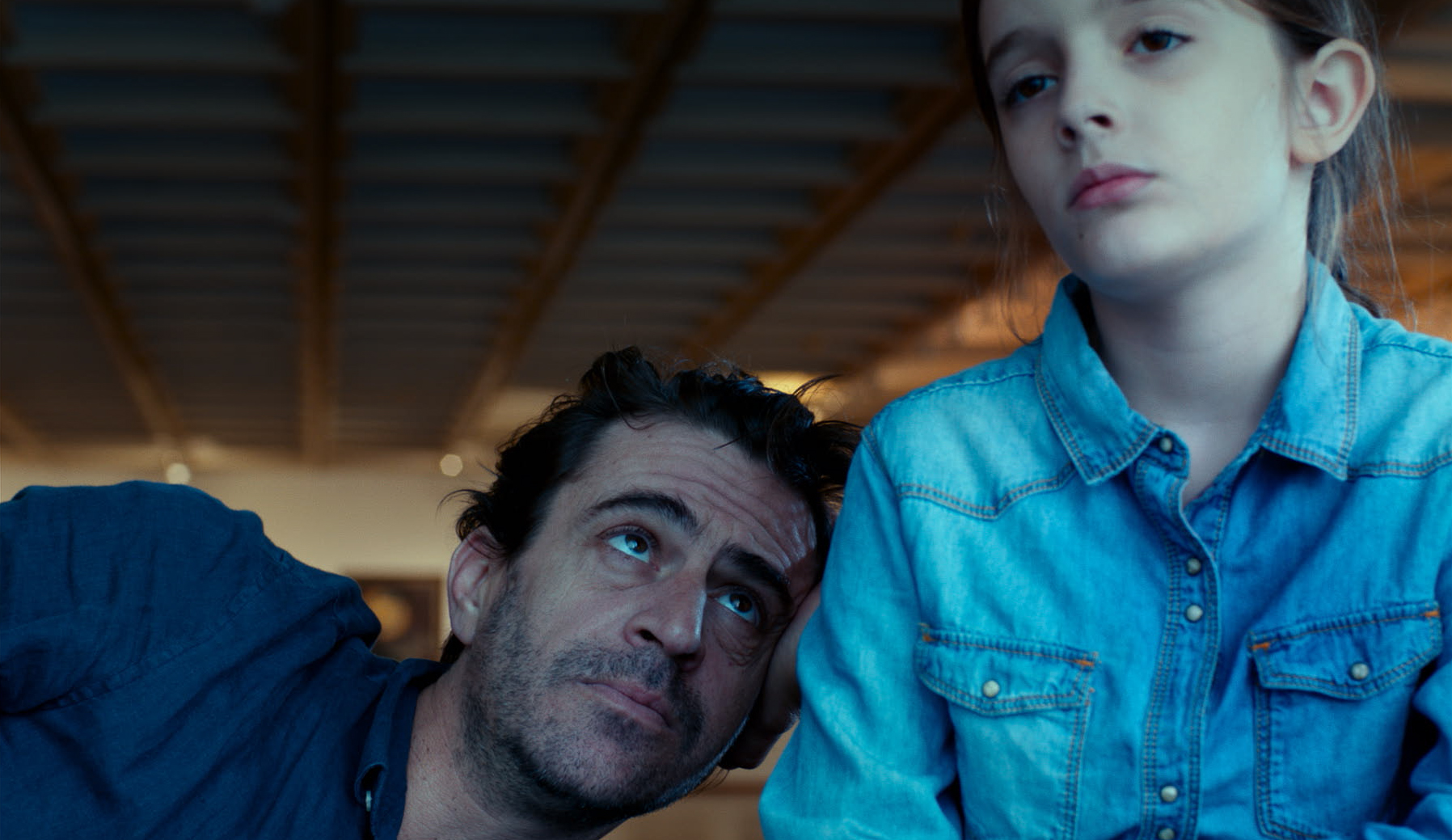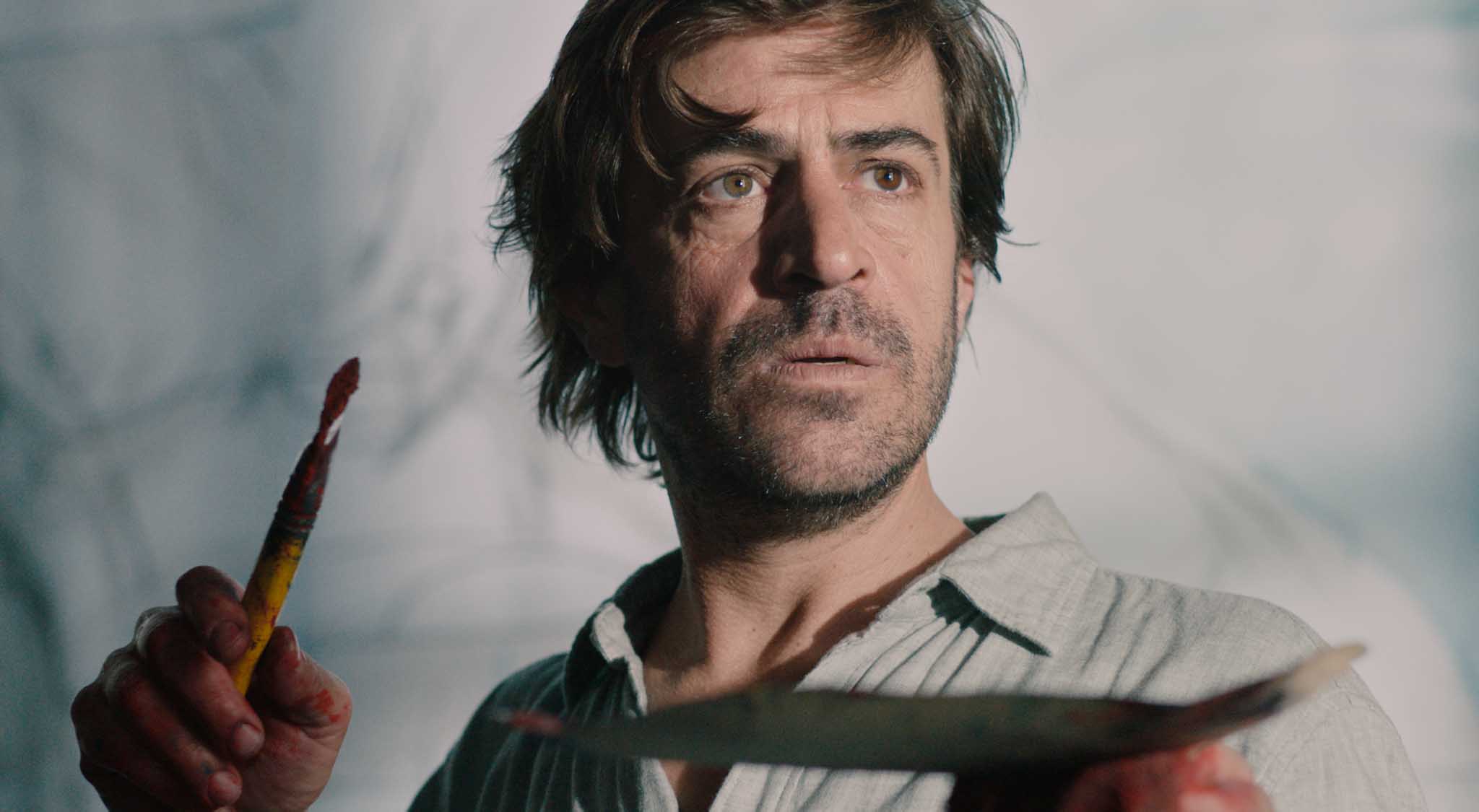Federico Veiroj on ‘Belmonte,’ Art, Montevideo, Emotional Storytelling
By John Hopewell
LOS ANGELES (Variety.com) – MADRID — At the start of the first shot of “Belmonte,” the camera pans slowly across dirt-filled cracks between stone blocks in a concrete wall to an extraordinary bronze statue of a family – father, mother, cherubic child – perched on a bull straining head down to pull them along to Javier Belmonte himself, surveying the art work pensively. The shot encapsulates the whole film: the constant contrast and interaction between art and a messier reality, in this case, Belmonte’s personal life, his yearnings for a family. 43, still with a dash of bohemia in his leather bomber jacket, Belmonte, a Montevideo has hit mid-life crisis. He still paints – bouffant, fleshy Botticelli-looking male nudes, awash in bright colors, but bestruck by angst.
As is Belmonte. He yearns for family, fears that his divorced wife’s pregnancy by her second husband will mean he gets to see less of his daughter, the light of his life, Celeste, an alert, hugely perceptive eight-or-so year old girl who has Belmonte sussed out. She’s going to start going out with a big at school, she says. But don’t worry, she tells Belmonte, “I’m not going to marry him, so you don’t need to get jealous.” Celeste thinks Belmonte’s sometimes somewhat scandalously nudes don’t reflect her father. “You’re not that bad,” she says.
Sold by Meikincine Entertainment, “Belmonte” traces the artist’s attempts to mesh work and his family, especially his daughter. In this, he may achieve some muddled progress. And he always has his art. Variety talked to Veiroj as his feature – his fourth, a near record for a Uruguayan director – continued its run on the festival circuit, hitting Morelia after a world premiere in Toronto, and European bow at San Sebastián.
The first shot – Belmont looking at the statue – could be said to sum up the film. Would you agree?
I decided to start the film with a statue (which is not so well preserved) of a peasant family struggling to keep going with the help of a bull, because I feel it gets to the heart of ‘Belmonte’s’ conflict: a man bursting with emotion struggling to move forward in life. Also, the bull helping the family represents to me the inner wild side that leads to survival. Finally, the introduction of the main character staring at such a powerful image of the statue, allows me to establish the protagonist’s gaze, his desire, what makes him curious.
Belmonte’s problem as an artist seems to be double: He hasn’t found a middle-period; the scene has changed, he should appeal more to family audiences, he’s told. Again, could you comment?
For me, Belmonte’s problem isn’t a creative one: He’s always doing what he wants, basically it’s the only thing he’s got clear in life. But, as the film goes on, we see him going through a turbulent emotional period which sets him on edge, makes him uncomfortable with the social environment; and that’s precisely when his fantasies start to appear, which are related to his own art. In any case, having a big exhibition coming up and a future to think about, because he needs to get closer to his daughter, forces Belmonte to search for the luminous side of life; that’s his battle.
In “A Useful Life,” “The Apostate,” now with Gonzalo Delgado, who plays Belmonte you cast distinguished professionals with little acting experience in lead roles. What attracts you to doing so?
It’s a matter of inspiration. I wrote “A Useful Life,” for the actor who plays in it, the same with “The Apostate” and now with “Belmonte.” It’s just that there are narratives connected to certain souls that can determine a project, and I trust the desire and the imagination of these already built characters made from real souls that I’m familiar with. Let’s say in “Belmonte” that Gonzalo Delgado is not only one of my best friends and also an accomplice in all my work as filmmaker, and also one of the most talented people I know. So, if I have the opportunity to make a film with him I just let myself go because it’s just my privilege and I want to share it with the audience, for them to be part of it.
This is your film which, I think, shows most of Montevideo. Could this be taken as a homage?
It was not my intention to make an homage, but I was inspired by settings such as the National Museum, the Solís Theatre, the sea front and even an old fashioned fur shop (not very typical for Montevideo in this case). I love these places and have long wanted to capture them on film. I wanted to position Belmonte’s emotions in relation to those places, sometimes to show his melancholy, sometimes his internal conflict or just the inherent beauty of the locations. The same with the music which is totally performed and mainly composed by Uruguayan talent; it is included in the film because of its emotion and beauty.
A figure appears in the film, perched in a tree, who seems rather like Belmonte’s alter ego. I’m not sure if you’d like to comment on his significance.
It could be his alter ego, a fantasy, or in some cases the audience will connect him to the same character Belmonte met in the seaside sequence: It’s the same man, who suddenly disappeared. So, it could an apparition of the dead and Belmonte’s desire to connect with it with joy… I believe intriguing and powerful images are really important to build Belmonte’s emotional palette. With “Belmonte” I looked for a dreamy, fantasy approach to images and sounds, maybe connected to Belmonte’s paintings, which reveal deep emotions in every canvas.
What guidelines did you follow when setting out to direct?
I worked with the actors mixing the action and the desire in every sequence. Every sequence reflects a particular mood, that I am using as a guideline for the whole film. That was so much the case in making “Belmonte” that I could say it’s a film whose narrative is just emotional.
I believe you’re now in post-production on the feature “Thus Spoke the Moneybroker.” Can you talk at all about it?
Yes, This year I shot my fifth film as a director, called “Thus Spoke the Moneybroker.” It was an incredible experience not only because I worked for six years on the novel’s adaptation -together with Arauco Hernández and Martín Mauregui – but also because it was the first time I’ve worked with a totally professional cast: Daniel Hendler, Dolores Fonzi, Luis Machín, Benjamín Vicuña, Paulo Betti, Germán de Silva, Jorge Bolani. Also, it was a big scale production that included ‘50s, ‘60s and ’70s reconstruction. I am extremely happy with the result of the film even if I am in the middle of post-production. At this point I feel very comfortable work with every kind of inspiration – books, my own ideas, scripts from other writers, or new things that could come up; I love film, and nowadays am also attracted to TV series.


